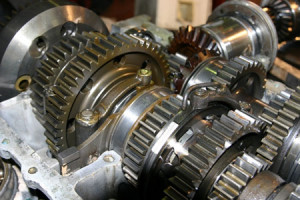 Though economy rate growth hasn’t been good in 2012 and 2013, the global perspective for Machinery Industry is bright. Recovery in the global economy has been irregular over the last few years. While the world economy grew 3.5% in 2012, the pace decelerated to 3.2% in 2013 and growth is expected to be only modestly better in 2014 at 3.4% and 4% in 2015, according to the IMF’s July World Economic Outlook. Advanced economies are projected to climb 1.8% in 2014 and 2.4% in 2015. These growth projections are considered crucial for global expansion as well as for the progress of emerging and developing nations. Emerging economies are predicted to grow by 4.6% in 2014 and 5.2% in 2015.
Though economy rate growth hasn’t been good in 2012 and 2013, the global perspective for Machinery Industry is bright. Recovery in the global economy has been irregular over the last few years. While the world economy grew 3.5% in 2012, the pace decelerated to 3.2% in 2013 and growth is expected to be only modestly better in 2014 at 3.4% and 4% in 2015, according to the IMF’s July World Economic Outlook. Advanced economies are projected to climb 1.8% in 2014 and 2.4% in 2015. These growth projections are considered crucial for global expansion as well as for the progress of emerging and developing nations. Emerging economies are predicted to grow by 4.6% in 2014 and 5.2% in 2015.
A spur in economic growth inducing more industrial activities is considered favorable for the expansion of the machinery industry. This direct correlation, right on the heels of the expected economic growth worldwide, makes us confident about the machinery industry. Across nations, the level of industrial activities is measured in terms of industrial production — output of the manufacturing, mining and utilities sectors. A brief discussion on the prospects of the machinery industry in different nations has been provided below.
Prospects in the United States
The U.S. operating environment for the machinery industry was quite favorable in the second quarter of 2014. Industrial production grew 5.5% year over year, including a 6.7% hike in manufacturing production and an 18.8% increase in mining production. However, utilities suffered a 21.4% decline. Per the latest report by the Federal Reserve, industrial production in July inched up 0.4% over the previous month and grew 5% year over year. The latest jobs report was surprisingly weak, though it may not be reflective of ground realities as other recent economic data has been indicating. This improving economic backdrop has prompted the Federal Reserve to discontinue its bond purchases by year-end 2014.
Beyond U.S. shores, export demand is a key factor for the U.S. machinery industry. According to the U.S. Census Bureau report published in Sep 2014, machinery shipments increased by 4.9% in the seven months ended Jul 2014. Shipments for industrial and metalworking machinery rose by 33.3% and 7%, respectively; while that for farm machinery was down 12.3% and construction machinery by 2.4%. New machinery orders were up 7.8%, while order backlog grew 12.5%. Also, international trade is on the rise. Export demand for U.S-made goods, especially automotive vehicles and parts, consumer articles, industrial supplies and materials, and food and beverages, increased by roughly $2 billion to $198 billion in July.
The world’s largest economy held nearly 16.5% of the global GDP on purchasing power parity (PPP) basis, in 2013. Over the last five years, the country’s GDP growth movement were in sync with its industrial production. With the IMF anticipating the economy to grow by 1.7% in 2014 and 3% in 2015, one can gather a fair idea about the growth prospects of the machinery industry.
Japanese Markets
The latest report by Japan’s Cabinet Office reveals that total machinery order grew 17.1% in Jun 2014 over the previous month, while it increased 14.4% sequentially for three months ended Jun 30, 2014. Private-sector machinery order (excluding volatile orders from ships and electric power companies) or core machinery order were down 10.4% in the quarter, raising concerns over the future of capital investments by companies. Orders from governments and overseas clients increased 30.3% and 42.2% respectively. For third-quarter 2014, core machinery orders are expected to increase 2.9% sequentially. However, lower orders from governments and overseas clients, coupled with weak demand from private and manufacturing sectors, are likely to pull down total machine orders by 15.3%.
Moreover, the country’s GDP contracted 1.7% in second-quarter 2014 (or 6.8% on an annualized basis) versus 1.6% growth recorded in the previous quarter. Consumption demand was weak due to a 3% increase in sales tax in Apr 2014, compelling the Bank of Japan to lower its real GDP growth forecast to 1.1% for fiscal 2014 (ending Mar 2015), from the earlier expectation of 1.4%. Further cuts by the Central Bank are expected in Oct 2014. The IMF predicts the economy to grow by 1.6% in 2014 and 1.1% in 2015.
Emerging Nations
China: The Chinese government is focused on rapid urbanization and has planned major investments accordingly. Domestic demand is strong in the country while exports are also on the rise. Further, efforts in improving trade relations with Brazil, Russia and other countries are expected to boost growth. The world’s second largest economy recorded a 6.9% year-over-year increase in its foreign trades in Jul 2014. Exports grew 14.5% while imports declined 1.6%. Industrial production in Jul 2014 increased 9% over the year-ago month. Growth in 2014 is expected to be driven by investments and a rise in demand from the advanced economies. The IMF anticipates the Chinese economy to grow by 7.4% in 2014 and 7.1% in 2015.
India: The country’s industrial production in Jun 2014 grew 3.4% over the year-ago month backed by 4.3% growth in mining, 1.8% in manufacturing and 15.7% in electricity sectors. GDP in the first-quarter fiscal 2014 (ended Jun 30, 2014) is estimated to grow by 5.7% year over year. A rise in domestic and external demand, expectation of policy improvements and better monsoon conditions are the primary growth drivers for the country. The newly-formed government has already taken certain measures to successfully boost the country’s foreign capital inflow. According to the IMF, the country is projected to grow 5.4% in 2014 and 6.4% in 2015.
Brazil: The country’s outlook for 2014 is a bit gloomy owing to low private investments and inadequate infrastructure. The IMF has lowered its growth forecast on the country to 1.3%, down 60 bps from its prior estimate. In Jul 2014, the country’s industrial production fell by 3.6% year over year. However, the country’s long-term prospects shine bright backed by its fast growth as the favorable destination for foreign direct investments. Industries like tourism, steel and electricity among others, are gaining strength and promise robust growth. Also, the Brazilian government, under its Growth Acceleration Program or PAC – phase II, has planned major investments for the development of ports, railroads, airports, wind farms and roads. Other areas of focus are sanitation, energy and logistics. Further, to promote its export businesses, roughly 24 Free Trade Zones (FTZ) is being set up across 20 Brazilian states.
South Africa: The government is focused on improving its mining, manufacturing chemicals and agricultural sectors. Huge public investments have been announced under the infrastructure development programs. Moreover, the country is keen on expanding its trade relations with its largest exporter-cum-importer country, China. The IMF expects the country to grow by 1.7% in 2014 and 2.7% in 2015. In Jun 2014, the country’s industrial production edged up 0.5% year over year, while it’s GDP grew by an annualized 0.6%.
Euro-zone
The Euro-zone’s industrial production (excluding construction) in Jun 2014 was down 0.3% over the previous month while being stable year over year, as per Eurostat’s data in Aug 2014. According to the VDMA Machine Makers’ Association, German machine tool orders in second-quarter 2014 rose by 1% year over year. Domestic orders were up 16% while international orders fell by 7%. GDP remained pegged at the previous quarter’s level.



